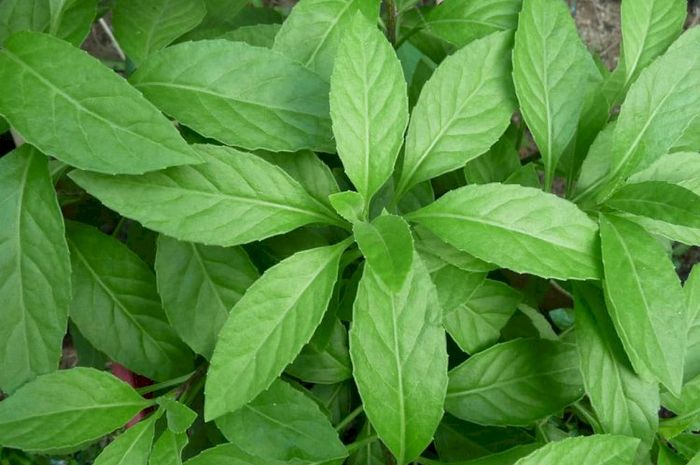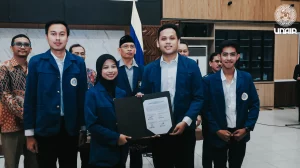Gynura procumbens are mainly distributed in tropical countries such as Indonesia, Malaysia, Vietnam, Thailand, and China. G. procumbens (locally name is Sambung Nyawa), in Indonesia and Malaysia, which means longevity greens. Asian people, especially Indonesian, used G. procumbens as an appetizer. It is also used as a remedy for fever disease, kidney, migraines, hypertension, diabetes mellitus, and cancer. In China, Gynura was approved by the government as a natural medicine for diabetes treatment since 2010.
The root of G. procumbens contains various beneficial secondary metabolites including ascorbic acid, phenolic, flavonoid, kaempferol, and quercetin. Roots of G. procumbens contain higher concentrations of secondary metabolites with antioxidant activities compared to the other tissue, especially flavonoids. However, the concentration and composition of flavonoids isolated from the conventionally cultivated G. procumbens plants are unstable due to environmental effects. Therefore, it is desirable to enhance the production of flavonoids using in vitro culture technique. Several studies demonstrated that biomass and flavonoid contents could be increased by culturing adventitious roots of G. procumbens under in vitro conditions. Our previous study showed that G. procumbens adventitious root methanol extract contains antioxidant properties. We found flavonoid compounds such as myricetin, kaempferol, quercetin, and catechin are the major compounds in G. procumbens adventitious root extract when analyzed by high-performance liquid chromatography (HPLC).
Cadmium (Cd) is a highly toxic environmental pollutant for humans and animals. High exposure to Cd could induce oxidative stress, causing enhanced production of reactive oxygen species (ROS) and reactive nitrogen species (RNS). Cd-exposed cells have been found to produce a high concentration of malondialdehyde (MDA), but the low activity of antioxidant enzymes, such as superoxide dismutase (SOD), catalase (CAT), and glutathione peroxidase (GPx). This implies that oxidative stress in tissues can be reduced by endogenous antioxidants. This may cause a toxic effect on an organism. In addition, a high concentration of Cd may inhibit the biosynthesis of DNA, and induce DNA damage and chromosome aberrations in animal cells.
To counteract the Cd toxicity, cells have a group of antioxidant enzyme systems function. However, consumption of antioxidants supplements is also important as they may interact with and enhance endogenous antioxidant activities. The present study aimed to investigate the hepatoprotective effect of G. procumbens adventitious root cultures against CdSO4 toxicity in mice. We examined the: (1) hematological parameters, (2) MDA level and antioxidant enzyme activities in blood serum and liver homogenates, and (3) relative gene expression of SOD-1 and CAT in the liver. G. procumbens treatment was given every morning (08:00 to 10:00 hours) and CdSO4 treatment was given 2 hours after G. procumbens treatment. Treatment were administered orally for 30 days.
This study showed that G. procumbens adventitious root methanol extract possesses hepatoprotective effects against Cd toxicity. The Cd-treated mice were administered with G. procumbens extract to produce a higher number of red blood cells (RBC), hemoglobin concentration (HGB), hematocrit (HCT), mean corpuscular volume (MCV), and mean corpuscular hemoglobin (MCH) than Cd-treated mice. In addition, the supplementation of G. procumbens root extract reduced the malondialdehyde (MDA) production in blood serum and liver and increased the antioxidant enzyme activities of catalase (CAT) and superoxide dismutase (SOD). These enzymatic activities were positively correlated with their respective gene transcripts. Taken together, these results demonstrate that G. procumbens adventitious root methanol extract could be potentially used in treating and preventing hepatic genotoxicity and oxidative stress. It could be useful in preventing diseases due to oxidative damage, such as cancer and diabetes.
Author: Prof. Dr. Y.S. Wulan Manuhara, M.Si.
Note:
This scientific article is reviewed from an article published in the Q2 International Journal:
Sugiharto, Dwi Winarni, Anjar Tri Wibowo, Ufairanisa Islamatasya, Idqa Nurtri Bhakti, Nabilatun Nisa, Boon Chin Tan, Yosephine Sri Wulan Manuhara* (2022). Gynura procumbens Adventitious Root Extract Altered Expression of Antioxidant Genes and Exert Hepatoprotective Effects Against Cadmium-Induced Oxidative Stress in Mice, Hayati Journal of Biosciences, Vol. 29 (4): 479-486. https://doi.org/10.4308/hjb.29.4.479-486
Link: https://journal.ipb.ac.id/index.php/hayati/article/view/38459









